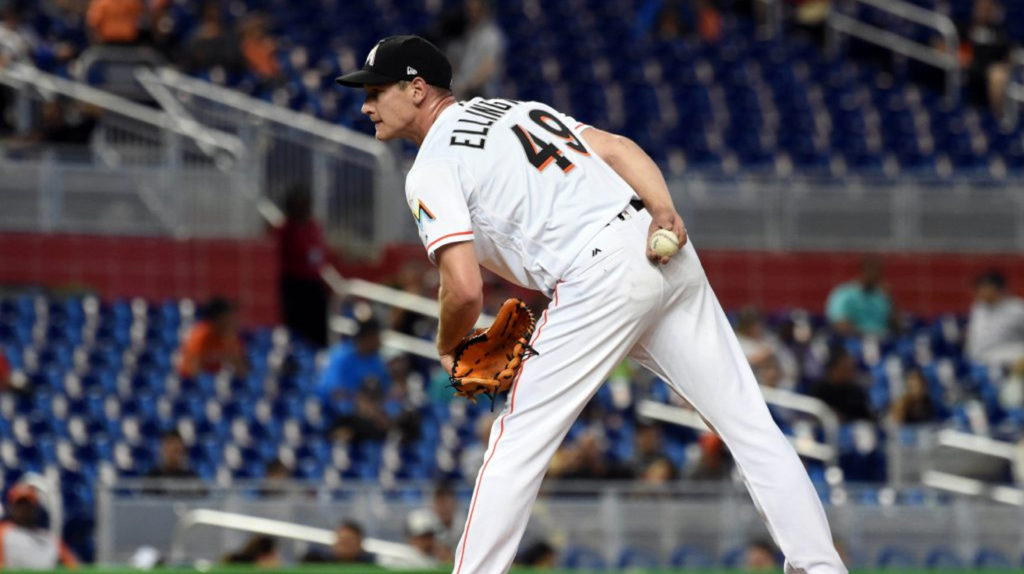Baseball carries inherent risks beneath its calculated strategies. The 100-mph fastball gets romanticized throughout the sport, but when velocity and command divorce, the result isn’t just bad pitching—it’s danger. Pitchers stand exactly 60 feet, 6 inches from home plate in a high-stakes scenario where erratic pitches transform from athletic feats into unguided missiles.
Disclaimer: Some images used for commentary and educational purposes under fair use. All rights remain with their respective owners.
Brian Ellington vs. Texas Rangers, 2017

Few baseball fans remember Brian Ellington, but Rangers hitters from that September 2017 game certainly do. When Ellington entered to pitch the ninth inning with the Marlins already crushing Texas by 14 runs, his first pitch to Mike Napoli registered at 98 mph on Statcast. His second offering? A blistering 99. The situation clearly didn’t call for maximum effort, yet there it was—baseball’s equivalent of showing up to a playground basketball game in full NBA gear.
Napoli At-Bat
Some at-bats deserve their own chapter in baseball lore. This one had everyone watching through their fingers like a horror movie. According to MLB Gameday, Ellington threw a 92-mph slider that bounced violently in the dirt, followed by fastballs that sailed dangerously high in the zone. The sequence culminated with a 99-mph fastball connecting with Napoli’s elbow on a 3-2 count. The radar readings and lack of command created a genuinely tense moment rarely seen outside close playoff games.
Jonathan Lucroy At-Bat
The subsequent Lucroy plate appearance only amplified concerns. Statcast data confirms Ellington fired four consecutive fastballs—all registering above 97 mph—and all missing the strike zone entirely. These weren’t pitches that just missed the corner; they were in another area code entirely. Watching these wild heaters made you wonder if the strike zone had personally offended Ellington earlier in the day.
Joey Gallo At-Bat
Against Gallo—himself known for an all-or-nothing approach at the plate—Ellington’s performance resembled improvised jazz more than precision pitching. The official game data shows a bizarre sequence: a foul ball to start, a changeup that somehow found the middle of the plate, then a 99-mph fastball that missed by a foot. The pitch selection appeared random, like someone playing darts while blindfolded. Modern baseball might value velocity, but this particular exhibition highlighted why command can never be optional.
Carlos Gomez Hit-By-Pitch
The inevitable collision of flesh and horsehide came with Carlos Gomez. After Gomez watched a hanging slider miss the zone, MLB Gameday confirms Ellington delivered a 98-mph fastball that struck Gomez high near the letters. The game broadcast captured the growing tension, with commentary noting the obvious control issues and resulting danger. This wasn’t strategic pitching; it was a workplace safety incident happening in real-time on national television.
Ellington’s Inning Conclusion
Despite the chaos, the box score shows Ellington eventually found enough control to finish the job. He got ahead of Shin-Soo Choo before inducing a groundout to first base. Then came Elvis Andrus, who popped up a 100-mph fastball that Statcast registered as high and tight. The inning ended without further incident, but the impression had been made. Even casual fans could see the stark difference between throwing hard and pitching effectively.
Ellington’s Statistical Impact
The final numbers tell a sobering story. The official stats from that appearance: one inning pitched, two hit batters, two walks. Statcast data reveals 11 separate fastballs at 97+ mph that were either balls or hit batters. While triple-digit readings grab headlines, baseball’s most effective arms demonstrate that velocity without accuracy isn’t just ineffective—it transforms the batter’s box into a danger zone that nobody signed up for.